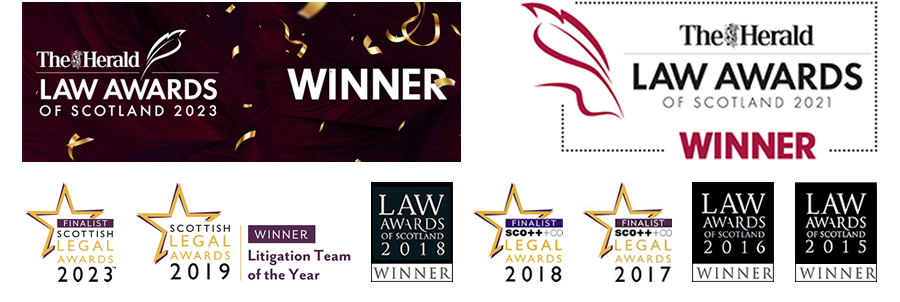
Sheriff rejects argument that low speed road traffic crash could not cause injury

A Sheriff has rejected an argument that a low velocity road traffic accident could not cause injury.
On 14th April 2023, the claimant, Mr John Good, a lorry driver, had parked his employer’s DAF lorry at the side of the road on Westfield industrial Estate before exiting the cab and walking round to the passenger’s side. He then climbed the steps and opened the passenger’s door to retrieve his work boots. While standing on the cab steps and leaning into the cab, he heard a noise and felt the truck move. There was not a significant degree of force, but impact was sufficient to knock him off balance. Mr Good banged his knee off a steel bar, fell off the van and on to the ground. His vehicle had been struck by a learner motorcyclist, Daniel Thomson, who gave evidence that he had a turned a corner into the industrial estate when his vision had been blocked by the sun and he collided with the rear of the claimant’s lorry that he had not seen.
An action was raised on Mr Good’s behalf in Airdrie Sheriff Court against the motorcyclist’s insurer, West Bay Insurance plc. The case called for a three day diet of proof in December 2024. At proof, there were two key issues to be determined. The first was whether the claimant was indeed standing on the steps of his employer’s lorry, as he contended, or whether he was in the cab of the vehicle as the defenders submitted. The second issue was whether the defender’s motorcycle struck the lorry with sufficient force for it to cause the claimant to lose his balance and fall to his injury.
Mr Good gave evidence that he estimated that the motorcyclist had struck his lorry at a speed of around 10-15mph. After the accident, he had not sought any medical treatment and had opted to self-medicate. His mindset was that he should not go to his GP unless it was an emergency. Although he had experienced increasing discomfort and stiffness affecting his back, his evidence was that he worked in a small team and the unspoken rule was that unless you were “dying”, you did not take any time off work.
Medical evidence from Mr S Sinha, Consultant Orthopaedic Surgeon, found Mr Good’s injuries to have been consistent with his account of having been standing on the steps of the cab at the point of impact. Had he been sitting in the vehicle, as the defenders alleged, then there would have been no injury or no major injury. Falls tend to be more awkward than jumps, and knees can buckle. Mr Sinha was of the opinion that the knee injury could take up to 12 weeks to heal, with the back injury taking up to 3 months to resolve fully.
The defender invited the Court to find Mr Sinha’s evidence inadmissible on the basis that he had demonstrated insufficient independence; an essential criterion of an expert witness whose primary duty is to the Court. The defenders sought to argue that Mr Sinha had a vested interest in the outcome of the case, as he was only paid if the case settled. In re-examination, Mr Sinha clarified that he was paid regardless of whether the claimant was successful in recovering damages for personal injury. The medical expert had no vested interest in the outcome of the case. The Court found Mr Sinha’s evidence was admissible on this basis.
Sheriff Pattison stated: “When one assesses the remarks made about being paid when cases settle against the rest of Mr Sinha’s evidence, namely that he would be paid in this case regardless of the outcome, then it seems to me that the witness must have been unclear about the meaning of ‘settle’, and may well have meant when cases concluded, irrespective of outcome. I found him to be an independent and impartial witness doing his best to assist the Court.”
The defender led evidence from Mr P Hughes, who presented himself as a Forensic Engineer. Mr Hughes had prepared a liability report addressing whether the impact of the collision was of sufficient force as to cause injury. Mr Hughes accepted in cross examination, however, that he was not a qualified Engineer. He took the view that the biomechanics of physics meant that the impact involved could not have transferred sufficient force between the vehicles to cause the claimant, Mr Good, to have fallen from the cab steps. He observed that the claimant would have only felt jolted as there would have been negligible force involved.
In his judgement finding in favour of the claimant, Sheriff Pattison observed that Mr Hughes had not examined either vehicle. He had failed to factor in the estimated speed of Mr Thomson’s motorcycle at the point of impact. Sheriff Pattison stated: “He [Mr Hughes] had started his analysis in this case with an assumed co-efficient, rather than by reference to even an estimated impact speed. His expression of his conclusions in absolute terms was unfortunate and gave the appearance of such certainty as though he was the decision maker. I note that he also conceded in cross examination that he had not interviewed either Mr Good or Mr Thomson and that there was potential that Mr Good may have felt some form of vibration, though he maintained his position that the force would have been negligible. Against this background, I do not feel I can afford his conclusions more than minimal weight.”
The Court found the claimant, Mr Good, to be a credible and reliable witness. He was straightforward and did not exaggerate. He was clear his vehicle had moved on its wheels, even if only a little, enough to knock him off balance, strike his left knee on the door frame and fall on the ground. That he took little or no time off work and did not go to his GP aided Mr Good’s credibility. This was contrasted with Mr Thomson, who the Sheriff considered to be an unreliable witness.
In conclusion, the Sheriff awarded damages in favour of the claimant. Noting that his claim for damages was only for soft tissue injuries that persisted for three months, Sheriff Pattison awarded the claimant £3,216 inclusive of interest.
Email Jacqueline Raitt
Call our personal injury claims team free on 0808 560 0872
Arrange a callback by using our enquiry form
Share this page
- Personal injury claims
- Our personal injury team
- How to make a personal injury compensation claim
- How to choose a personal injury solicitor
- Claim now
- Personal injury claim calculator
- How claims are valued
- Frequently asked questions
- Types of personal injury claim
- How to sue someone in the Scottish courts
- Recent successes
- Case studies
- Testimonials
- Injury Compensation Alliance

